Protsessor Intel Core i9-11900K processor 3.5 GHz 16 MB Smart Cache Box
429.30 €
Kaup laost otsas.
Meil pole infot antud toote müügile ilmumisest.
Telli toote saabumise kohta teavitus:
 Teavita saabumisest
Teavita saabumisest
Otsas alates
26.11.2024
Tootja:
INTEL
01.ee kaubakood:2370752
Tootekood: BX8070811900K
EAN:
- 5032037215008
Pretensiooni esitamise aeg: 12 kuud
NB! Kirjelduses võib esineda ebatäpsusi või olla muus keeles. Palume võtta ühendust, kui soovite saada täiendavat lisainfot selle toote kohta eesti keeles.
| Kirjeldus |
<b>Intel® Trusted Execution Technology</b><br>Intel® Trusted Execution Technology for safer computing is a versatile set of hardware extensions to Intel® processors and chipsets that enhance the digital office platform with security capabilities such as measured launch and protected execution. It enables an environment where applications can run within their own space, protected from all other software on the system.<br><br><b>Intel® Virtualization Technology for Directed I/O (VT-d)</b><br>Intel® Virtualization Technology for Directed I/O (VT-d) continues from the existing support for IA-32 (VT-x) and Itanium® processor (VT-i) virtualization adding new support for I/O-device virtualization. Intel VT-d can help end users improve security and reliability of the systems and also improve performance of I/O devices in virtualized environments.<br><br><b>Intel® Virtualization Technology (VT-x)</b><br>Intel® Virtualization Technology (VT-x) allows one hardware platform to function as multiple “virtual” platforms. It offers improved manageability by limiting downtime and maintaining productivity by isolating computing activities into separate partitions.<br><br><b>Intel® 64</b><br>Intel® 64 architecture delivers 64-bit computing on server, workstation, desktop and mobile platforms when combined with supporting software.¹ Intel 64 architecture improves performance by allowing systems to address more than 4 GB of both virtual and physical memory.<br><br><b>Intel® Clear Video HD Technology</b><br>Intel® Clear Video HD Technology, like its predecessor, Intel® Clear Video Technology, is a suite of image decode and processing technologies built into the integrated processor graphics that improve video playback, delivering cleaner, sharper images, more natural, accurate, and vivid colors, and a clear and stable video picture. Intel® Clear Video HD Technology adds video quality enhancements for richer color and more realistic skin tones.<br><br><b>Cache</b><br>CPU Cache is an area of fast memory located on the processor. Intel® Smart Cache refers to the architecture that allows all cores to dynamically share access to the last level cache.<br><br><b>Intel® AES New Instructions</b><br>Intel® AES New Instructions (Intel® AES-NI) are a set of instructions that enable fast and secure data encryption and decryption. AES-NI are valuable for a wide range of cryptographic applications, for example: applications that perform bulk encryption/decryption, authentication, random number generation, and authenticated encryption.<br><br><b>Intel® InTru™ 3D Technology</b><br>Intel® InTru™ 3D Technology provides stereoscopic 3-D Blu-ray* playback in full 1080p resolution over HDMI* 1.4 and premium audio.<br><br><b>Idle States</b><br>Idle States (C-states) are used to save power when the processor is idle. C0 is the operational state, meaning that the CPU is doing useful work. C1 is the first idle state, C2 the second, and so on, where more power saving actions are taken for numerically higher C-states.<br><br><b>Intel® Turbo Boost Technology</b><br>Intel® Turbo Boost Technology dynamically increases the processor's frequency as needed by taking advantage of thermal and power headroom to give you a burst of speed when you need it, and increased energy efficiency when you don’t.<br><br><b>Max Turbo Frequency</b><br>Max Turbo Frequency is the maximum single-core frequency at which the processor is capable of operating using Intel® Turbo Boost Technology and, if present, Intel® Turbo Boost Max Technology 3.0 and Intel® Thermal Velocity Boost. Frequency is typically measured in gigahertz (GHz), or billion cycles per second.<br><br><b>Execute Disable Bit</b><br>Execute Disable Bit is a hardware-based security feature that can reduce exposure to viruses and malicious-code attacks and prevent harmful software from executing and propagating on the server or network.<br><br><b>Intel® Hyper-Threading Technology</b><br>Intel® Hyper-Threading Technology (Intel® HT Technology) delivers two processing threads per physical core. Highly threaded applications can get more work done in parallel, completing tasks sooner.<br><br><b>Instruction Set</b><br>An instruction set refers to the basic set of commands and instructions that a microprocessor understands and can carry out. The value shown represents which Intel’s instruction set this processor is compatible with.<br><br><b>Intel® Quick Sync Video</b><br>Intel® Quick Sync Video delivers fast conversion of video for portable media players, online sharing, and video editing and authoring.<br><br><b>Intel vPro® Platform Eligibility</b><br>The Intel vPro® platform is a set of hardware and technologies used to build business computing endpoints with premium performance, built-in security, modern manageability and platform stability.<br><br><b>Intel® VT-x with Extended Page Tables (EPT)</b><br>Intel® VT-x with Extended Page Tables (EPT), also known as Second Level Address Translation (SLAT), provides acceleration for memory intensive virtualized applications. Extended Page Tables in Intel® Virtualization Technology platforms reduces the memory and power overhead costs and increases battery life through hardware optimization of page table management.<br><br><b>Intel® Optane™ Memory Supported</b><br>Intel® Optane™ memory is a revolutionary new class of non-volatile memory that sits in between system memory and storage to accelerate system performance and responsiveness. When combined with the Intel® Rapid Storage Technology Driver, it seamlessly manages multiple tiers of storage while presenting one virtual drive to the OS, ensuring that data frequently used resides on the fastest tier of storage. Intel® Optane™ memory requires specific hardware and software configuration.<br><br><b>Enhanced Intel SpeedStep® Technology</b><br>Enhanced Intel SpeedStep® Technology is an advanced means of enabling high performance while meeting the power-conservation needs of mobile systems. Conventional Intel SpeedStep® Technology switches both voltage and frequency in tandem between high and low levels in response to processor load. Enhanced Intel SpeedStep® Technology builds upon that architecture using design strategies such as Separation between Voltage and Frequency Changes, and Clock Partitioning and Recovery.<br><br><b>Intel® Clear Video Technology</b><br>Intel® Clear Video Technology is a suite of image decode and processing technologies built into the integrated processor graphics that improve video playback, delivering cleaner, sharper images, more natural, accurate, and vivid colors, and a clear and stable video picture.<br><br><b>Secure Key</b><br>Intel® Secure Key consists of a digital random number generator that creates truly random numbers to strengthen encryption algorithms.<br><br><b>Intel® Turbo Boost Technology 2.0 Frequency</b><br>Intel® Turbo Boost Technology 2.0 Frequency is the maximum single core frequency at which the processor is capable of operating using Intel® Turbo Boost Technology. Frequency is typically measured in gigahertz (GHz), or billion cycles per second.<br><br><b>Intel® Software Guard Extensions (Intel® SGX)</b><br>Intel® Software Guard Extensions (Intel® SGX) provide applications the ability to create hardware enforced trusted execution protection for their applications’ sensitive routines and data. Intel® SGX provides developers a way to partition their code and data into CPU hardened trusted execution environments (TEE’s).<br><br><b>Intel® Deep Learning Boost (Intel® DL Boost) on CPU</b><br>A new set of embedded processor technologies designed to accelerate AI deep learning use cases. It extends Intel AVX-512 with a new Vector Neural Network Instruction (VNNI) that significantly increases deep learning inference performance over previous generations.<br><br><b>Instruction Set Extensions</b><br>Instruction Set Extensions are additional instructions which can increase performance when the same operations are performed on multiple data objects. These can include SSE (Streaming SIMD Extensions) and AVX (Advanced Vector Extensions).<br><br><b>Intel® Thermal Velocity Boost Frequency</b><br>Intel® Thermal Velocity Boost (Intel® TVB) is a feature that opportunistically and automatically increases clock frequency above single-core and multi-core Intel® Turbo Boost Technology frequencies based on how much the processor is operating below its maximum temperature and whether turbo power budget is available. The frequency gain and duration is dependent on the workload, capabilities of the processor and the processor cooling solution.<br><br><b>Intel® Turbo Boost Max Technology 3.0 Frequency</b><br>Intel® Turbo Boost Max Technology 3.0 identifies the best performing core(s) on a processor and provides increased performance on those cores through increasing frequency as needed by taking advantage of power and thermal headroom. Intel® Turbo Boost Max Technology 3.0 frequency is the clock frequency of the CPU when running in this mode.<br><br><b>Intel® Turbo Boost Max Technology 3.0</b><br>Intel® Turbo Boost Max Technology 3.0 identifies the best performing core(s) on a processor and provides increased performance on those cores through increasing frequency as needed by taking advantage of power and thermal headroom.<br><br><b>Thermal Monitoring Technologies</b><br>Thermal Monitoring Technologies protect the processor package and the system from thermal failure through several thermal management features. An on-die Digital Thermal Sensor (DTS) detects the core's temperature, and the thermal management features reduce package power consumption and thereby temperature when required in order to remain within normal operating limits.<br><br><b>Intel® Thermal Velocity Boost Temperature</b><br>Thermal Velocity Boost (Intel® TVB) Temperature is the operating temperature limit to enable the Intel® TVB frequency; higher temperatures may opportunistically enable the Intel TVB frequency.<br><br><b>Intel® Thermal Velocity Boost</b><br>Intel® Thermal Velocity Boost (Intel® TVB) is a feature that opportunistically and automatically increases clock frequency above single-core and multi-core Intel® Turbo Boost Technology frequencies based on how much the processor is operating below its maximum temperature and whether turbo power budget is available. The frequency gain and duration is dependent on the workload, capabilities of the processor and the processor cooling solution.<br><br><b>Intel® Identity Protection Technology</b><br>Intel® Identity Protection Technology is a built-in security token technology that helps provide a simple, tamper-resistant method for protecting access to your online customer and business data from threats and fraud. Intel® IPT provides a hardware-based proof of a unique user’s PC to websites, financial institutions, and network services; providing verification that it is not malware attempting to login. Intel® IPT can be a key component in two-factor authentication solutions to protect your information at websites and business log-ins.<br><br><b>Intel® Gaussian & Neural Accelerator</b><br>Intel® Gaussian & Neural Accelerator (GNA) is an ultra-low power accelerator block designed to run audio and speed-centric AI workloads. Intel® GNA is designed to run audio based neural networks at ultra-low power, while simultaneously relieving the CPU of this workload.<br><br><b>Intel® Stable IT Platform Program (SIPP)</b><br>The Intel® Stable IT Platform Program (Intel® SIPP) aims for zero changes to key platform components and drivers for at least 15 months or until the next generational release, reducing complexity for IT to effectively manage their computing endpoints.<br><br><b>Intel® Boot Guard</b><br>Intel® Device Protection Technology with Boot Guard helps protect the system’s pre-OS environment from viruses and malicious software attacks.Intel Core i9-11900K. Processor family: Intel® Core™ i9, Processor socket: LGA 1200 (Socket H5), Processor lithography: 14 nm. Memory channels: Dual-channel, Maximum internal memory supported by processor: 128 GB, Memory types supported by processor: DDR4-SDRAM. On-board graphics card model: Intel UHD Graphics 750, Maximum on-board graphics card memory: 64 GB, On-board graphics card base frequency: 350 MHz. Market segment: Desktop, Use conditions: PC/Client/Tablet, PCI Express configurations: 1x16+1x4, 2x8+1x4, 1x8+3x4. Intel® Turbo Boost Max Technology 3.0 frequency: 5.2 GHz, Intel® Turbo Boost Technology 2.0 frequency: 5.1 GHz, Intel® Thermal Velocity Boost Temperature: 70 °C
|
Protsessor Intel Core i9-11900K processor 3.5 GHz 16 MB Smart Cache Box
TOP
Protsessor INTEL CPU Desktop Core i3-14100 (up to 4.70 GHz, 12M Cache, LGA1700) tray -5% 117.30 € 122.90 €
Tootekood: INTEL CM8071505092206SRMX1
Tellimisel toode | Partneri laoseis: 10+ tk
Tellimisel toode | Partneri laoseis: 10+ tk
Tarneaeg: 1-5 tööpäeva
Protsessor Intel CPU Desktop Ultra 5 245KF (24M Cache, up to 5.20 GHz, FCLGA18W) box -7% 337.20 € 360.84 €
Tootekood: INTEL BX80768245KFSRQCY
EAN: 5032037282109
Tellimisel toode | Partneri laoseis: 5+ tk
EAN: 5032037282109
Tellimisel toode | Partneri laoseis: 5+ tk
Tarneaeg: 1-5 tööpäeva
Protsessor INTEL CPU Desktop Ultra 7 265KF (30M Cache, up to 5.50 GHz, FCLGA18W) box -16% 384.90 € 457.19 €
Tootekood: INTEL BX80768265KFSRQCU
EAN: 5032037281980
Tellimisel toode | Partneri laoseis: 10+ tk
EAN: 5032037281980
Tellimisel toode | Partneri laoseis: 10+ tk
Tarneaeg: 1-5 tööpäeva
Protsessor Intel CPU Desktop Ultra 7 265F (30M Cache, up to 5.30 GHz, FCLGA18W) box -16% 375.20 € 448.60 €
Tootekood: INTEL BX80768265FSRQCV
EAN: 5032037282734
Tellimisel toode | Partneri laoseis: 10+ tk
EAN: 5032037282734
Tellimisel toode | Partneri laoseis: 10+ tk
Tarneaeg: 1-5 tööpäeva
Protsessor Intel CPU Desktop Core i5-14400F (up to 4.70 GHz, 20M Cache, LGA1700) box -18% 147.50 € 179.47 €
Tootekood: INTEL BX8071514400FSRN47
EAN: 5032037279147
Tellimisel toode | Partneri laoseis: 10+ tk
EAN: 5032037279147
Tellimisel toode | Partneri laoseis: 10+ tk
Tarneaeg: 1-5 tööpäeva
Protsessor INTEL CPU Desktop Ultra 7 265K (30M Cache, up to 5.50 GHz, FCLGA18W) box -15% 403.70 € 476.28 €
Tootekood: INTEL BX80768265KSRQCW
EAN: 5032037282062
Tellimisel toode | Partneri laoseis: 10+ tk
EAN: 5032037282062
Tellimisel toode | Partneri laoseis: 10+ tk
Tarneaeg: 1-5 tööpäeva
Protsessor INTEL CPU Desktop Ultra 5 245K (24M Cache, up to 5.20 GHz, FCLGA18W) box -7% 354.10 € 381.73 €
Tootekood: INTEL BX80768245KSRQCT
EAN: 5032037282086
Tellimisel toode | Partneri laoseis: 10+ tk
EAN: 5032037282086
Tellimisel toode | Partneri laoseis: 10+ tk
Tarneaeg: 1-5 tööpäeva
Protsessor Intel CPU Desktop Ultra 7 265 (30M Cache, up to 5.30 GHz, FCLGA18W) tray -8% 381.30 € 413.37 €
Tootekood: INTEL AT8076806413SRQCX
Tellimisel toode | Partneri laoseis: 10+ tk
Tellimisel toode | Partneri laoseis: 10+ tk
Tarneaeg: 1-5 tööpäeva
Protsessor Intel CPU Desktop Ultra 7 265F (30M Cache, up to 5.30 GHz, FCLGA18W) tray -9% 363.20 € 399.60 €
Tootekood: INTEL AT8076806411SRQCV
Tellimisel toode | Partneri laoseis: 10+ tk
Tellimisel toode | Partneri laoseis: 10+ tk
Tarneaeg: 1-5 tööpäeva
Protsessor Intel CPU Desktop Ultra 9 285K (36M Cache, up to 5.70 GHz, FCLGA18W) box -11% 656.60 € 736.94 €
Tootekood: INTEL BX80768285KSRQD5
Tellimisel toode | Partneri laoseis: 1 tk
Tellimisel toode | Partneri laoseis: 1 tk
Tarneaeg: 1-5 tööpäeva



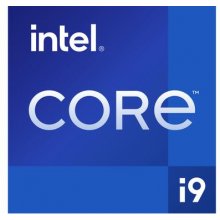

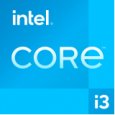


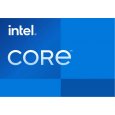

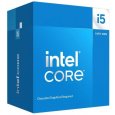
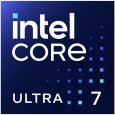
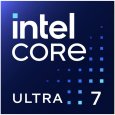
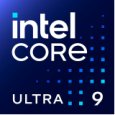
 Parfüümid ja kosmeetika
Parfüümid ja kosmeetika
 Arvutitehnika
Arvutitehnika
 Toonerid ja tindid
Toonerid ja tindid
 TV, audio, video, mängukonsoolid
TV, audio, video, mängukonsoolid
 Kodutehnika
Kodutehnika
 Kodu ja sisustus
Kodu ja sisustus
 Aed ja hoov
Aed ja hoov
 Fototehnika, binoklid
Fototehnika, binoklid
 Ehitus ja remont
Ehitus ja remont
 Lastekaubad
Lastekaubad
 Kontoritehnika
Kontoritehnika
 Kirja- ja koolitarbed
Kirja- ja koolitarbed
